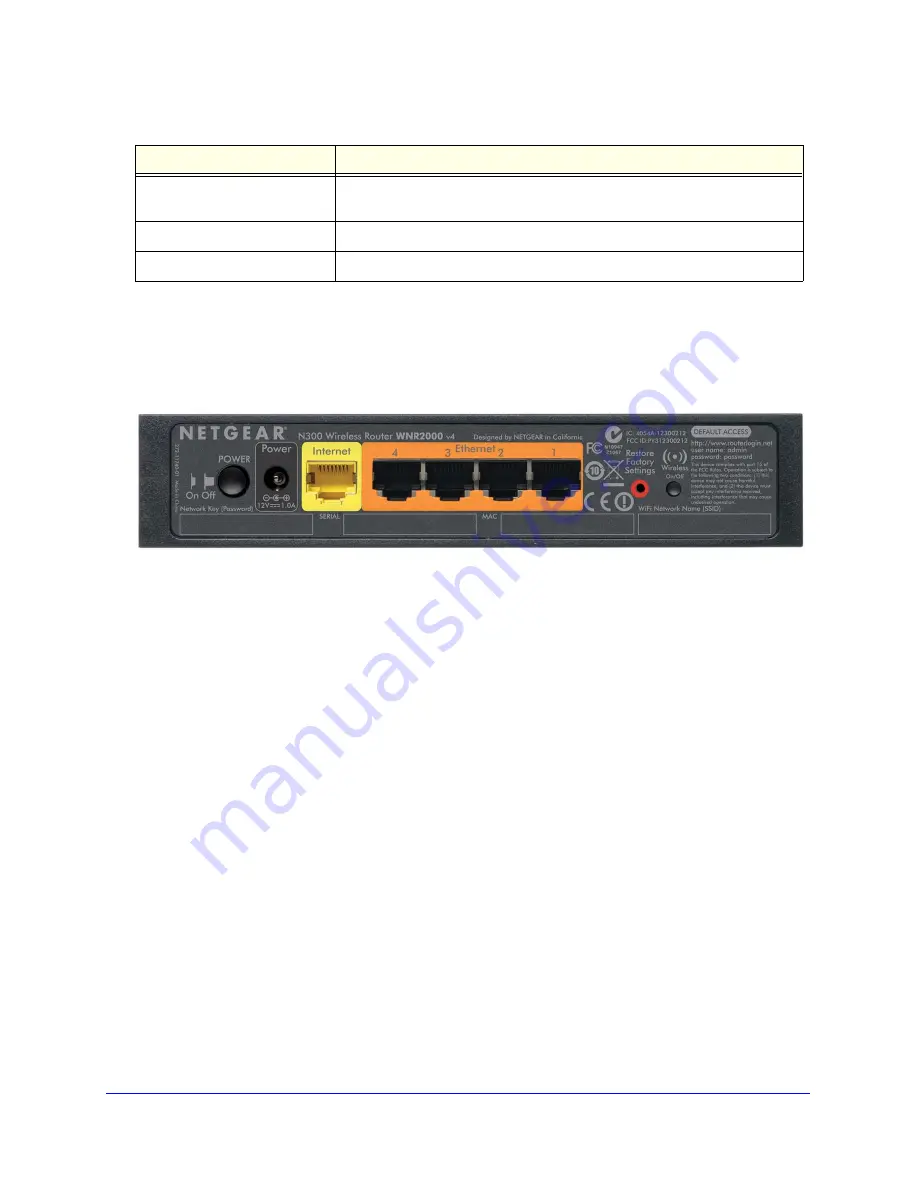
Hardware Setup
11
N300 Wireless Router WNR2000v4
Label
The label on the back panel of the router shows the default login information, default WiFi
network name (SSID), network key (also referred to as wireless network password or
passphrase), serial number, MAC address, and other information.
Figure 4. Label on the back panel
For information about restoring factory settings, see
Factory Settings
on page 133.
Position Your Router
The router lets you access your network from virtually anywhere within the operating range of
your wireless network. However, the operating distance or range of your wireless connection
can vary significantly depending on the physical placement of your router. For example, the
thickness and number of walls the wireless signal passes through can limit the range. For
best results, place your router:
•
Near the center of the area where your computers and other devices operate, and
preferably within line of sight to your wireless devices.
•
So it is accessible to an AC power outlet and near Ethernet cables for wired computers.
•
In an elevated location such as a high shelf, keeping the number of walls and ceilings
between the router and your other devices to a minimum.
•
Away from electrical devices that are potential sources of interference, such as ceiling
fans, home security systems, microwaves, computers, or the base of a cordless phone or
2.4 GHz cordless phone.
•
Away from any large metal surfaces, such as a solid metal door or aluminum studs. Large
expanses of other materials such as glass, insulated walls, fish tanks, mirrors, brick, and
concrete can also affect your wireless signal.
Internet port
Ethernet port for connecting the router to a cable broadband modem or DSL
broadband modem. The Internet port is also referred to as the WAN port.
AC power connector
AC power connector to connect the power adapter to the router.
Power On/Off button
Turns the router on or off.
Table 2. Back panel button, port, and connector descriptions (continued)
Port or Button
Description












































